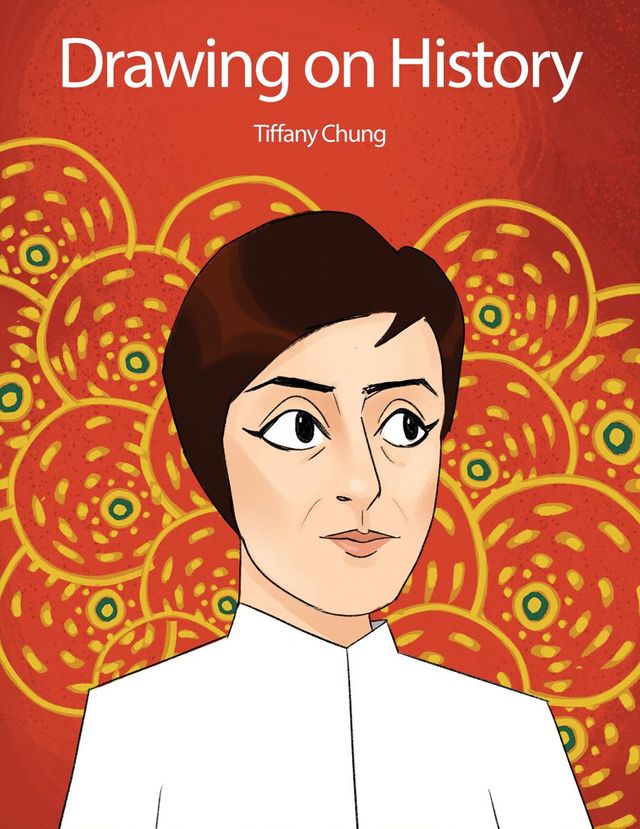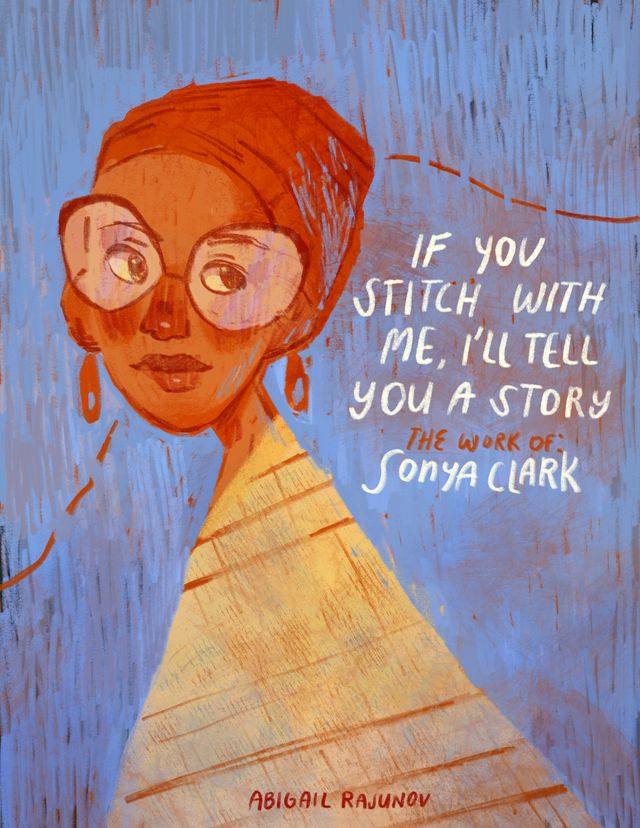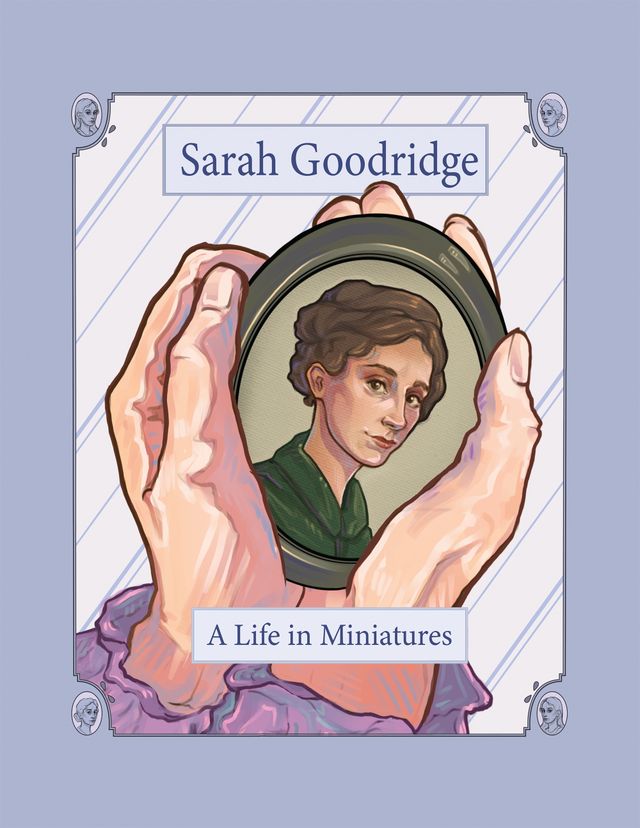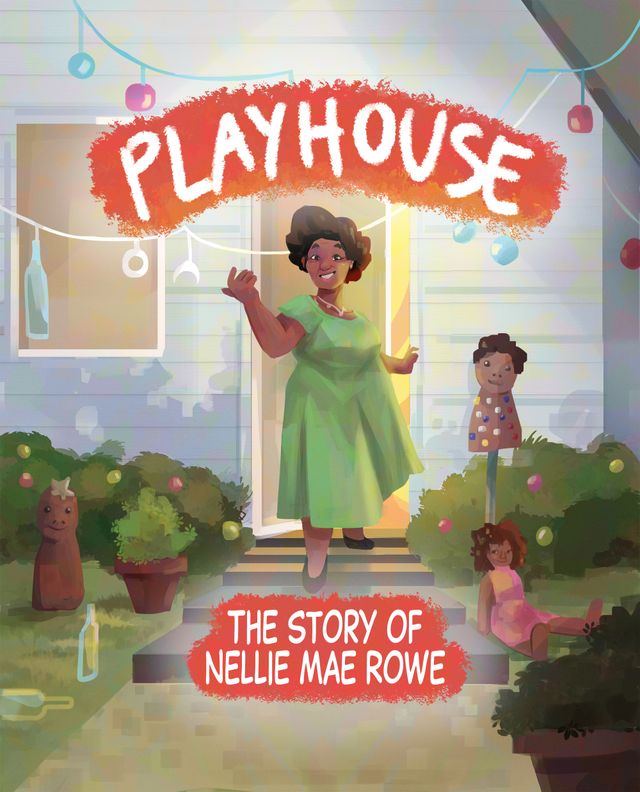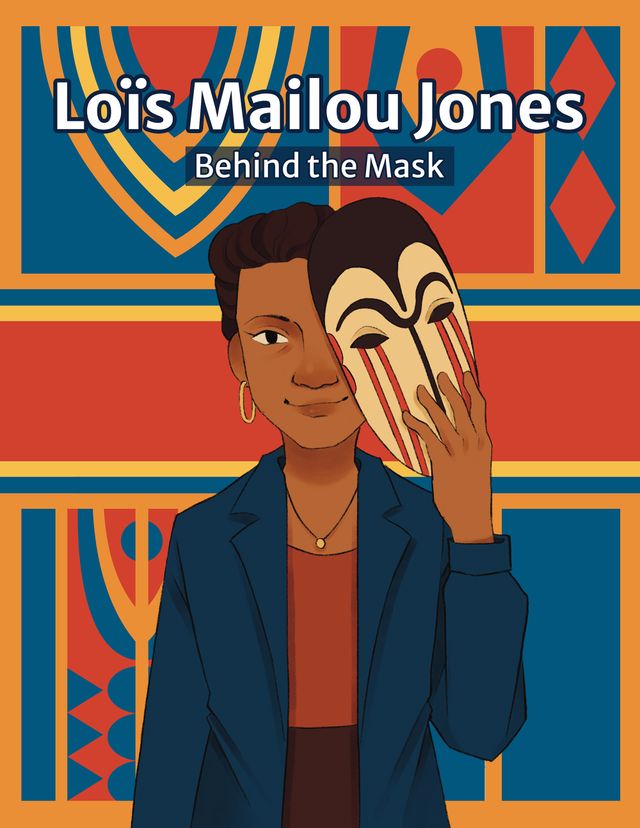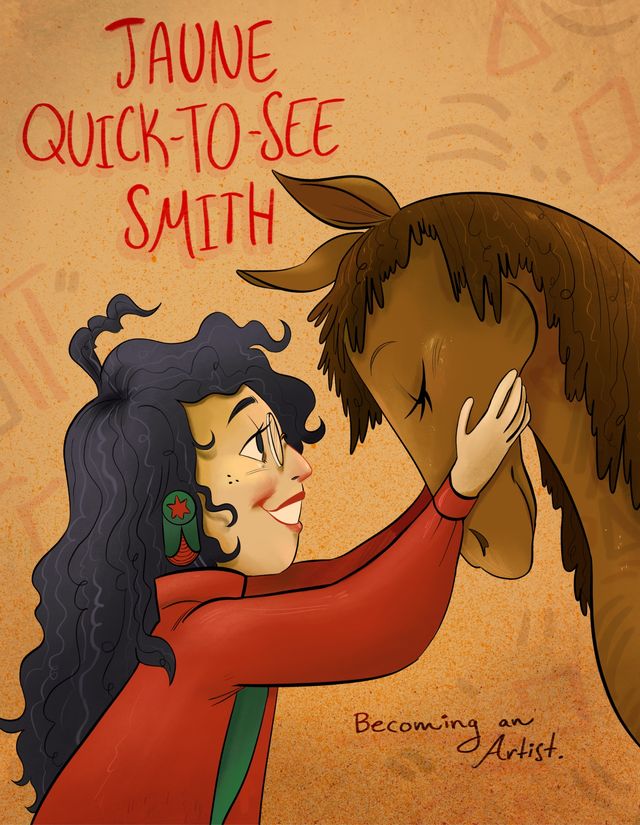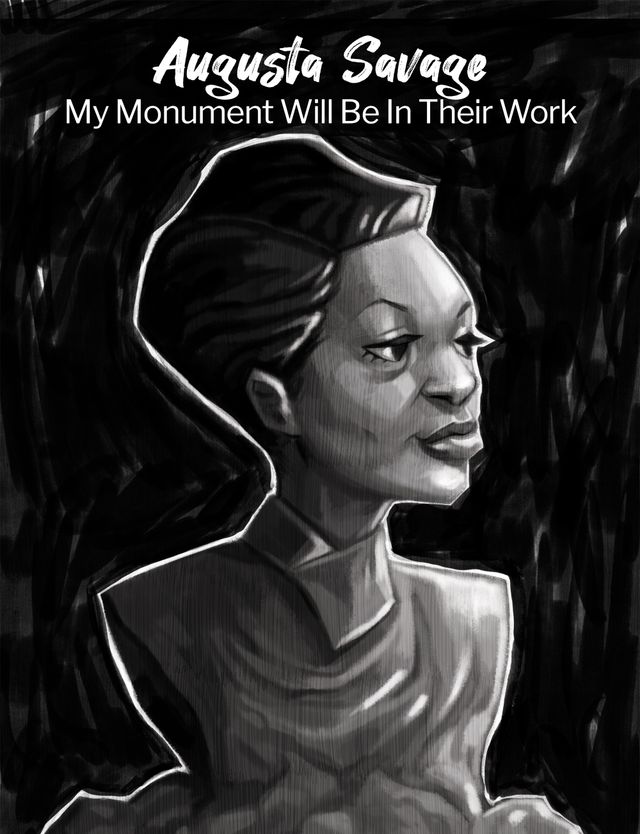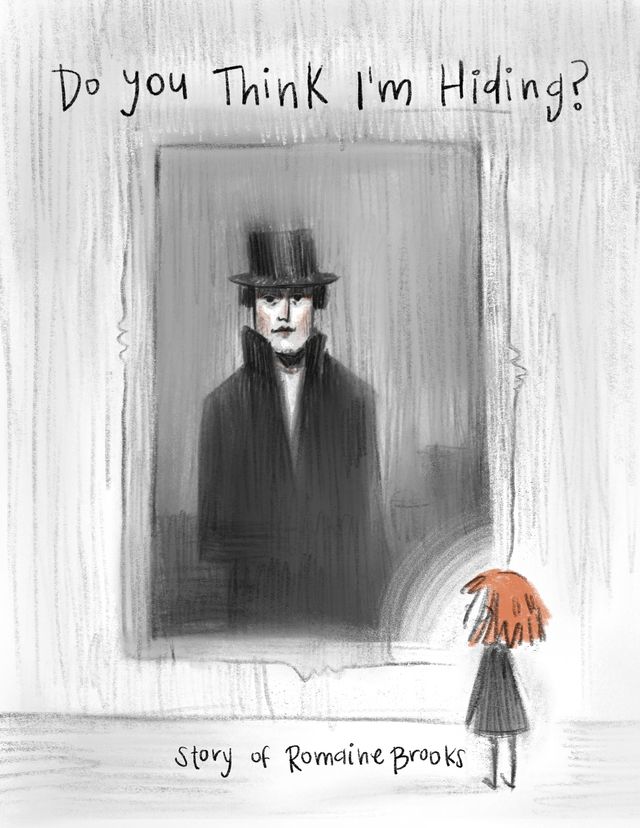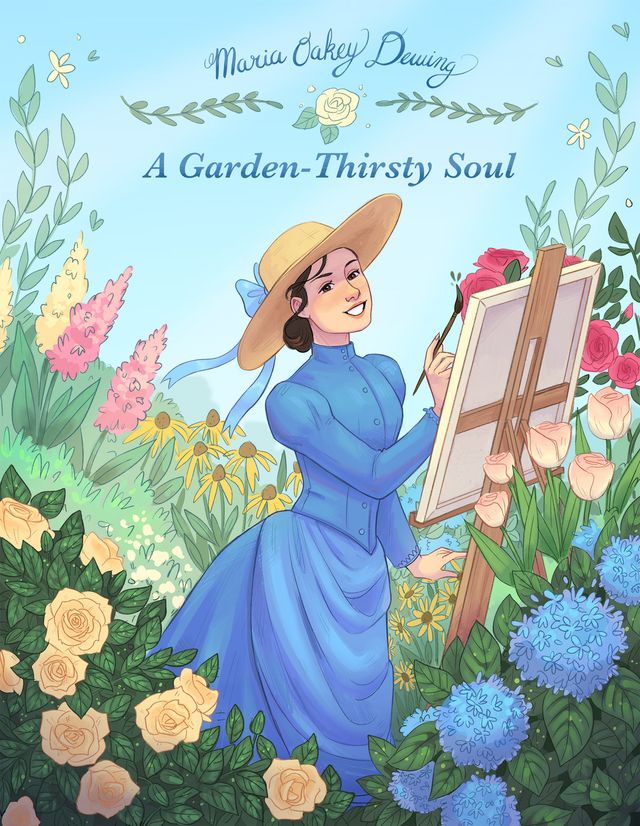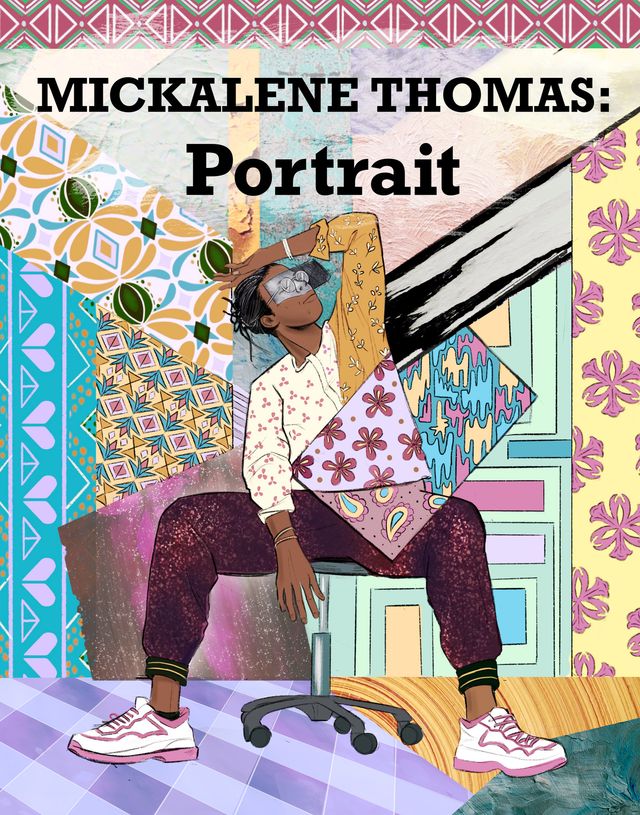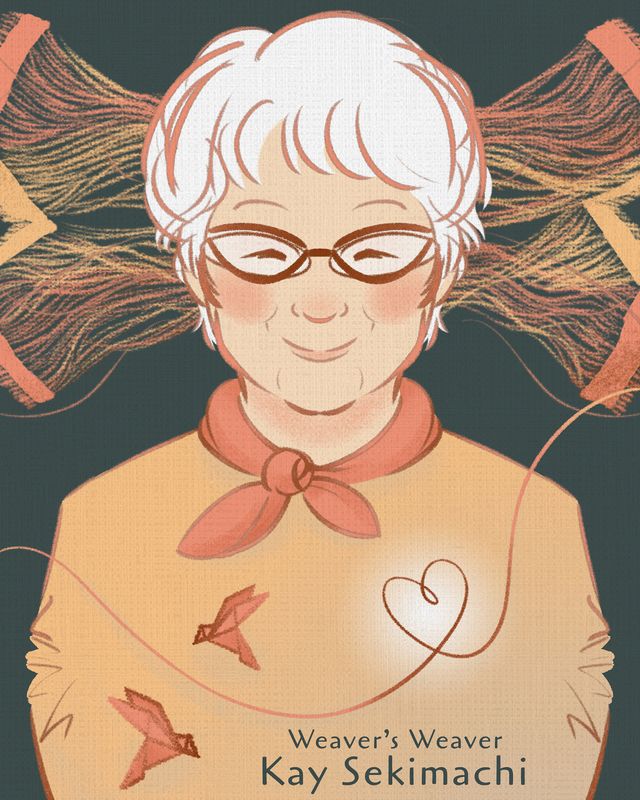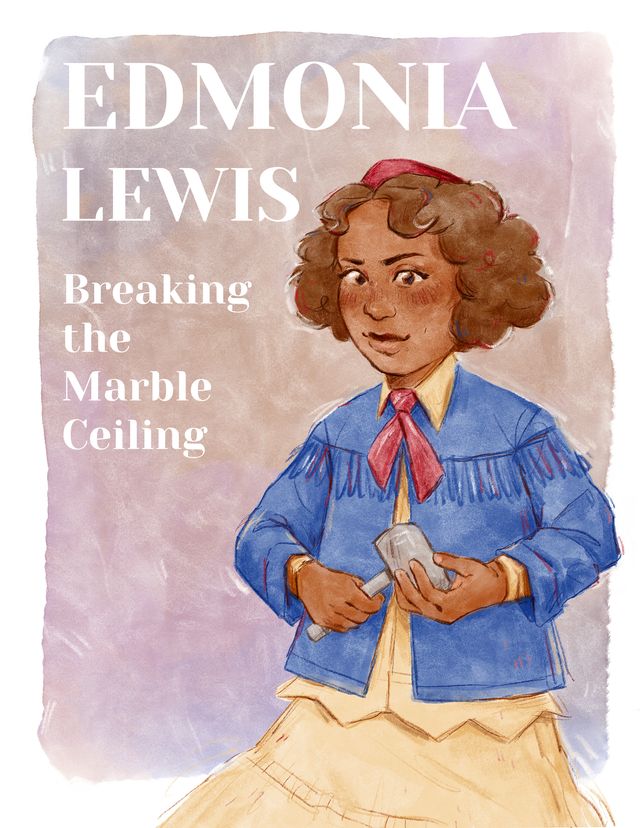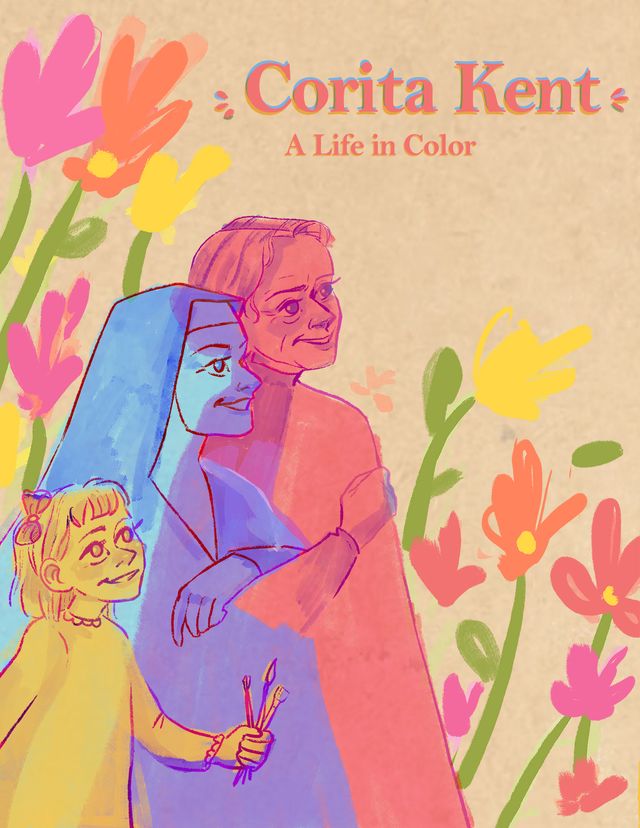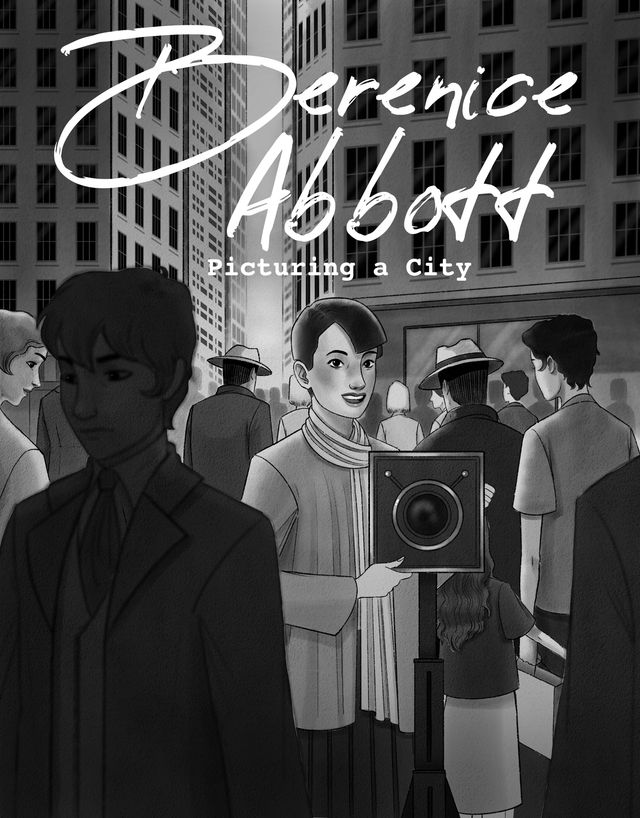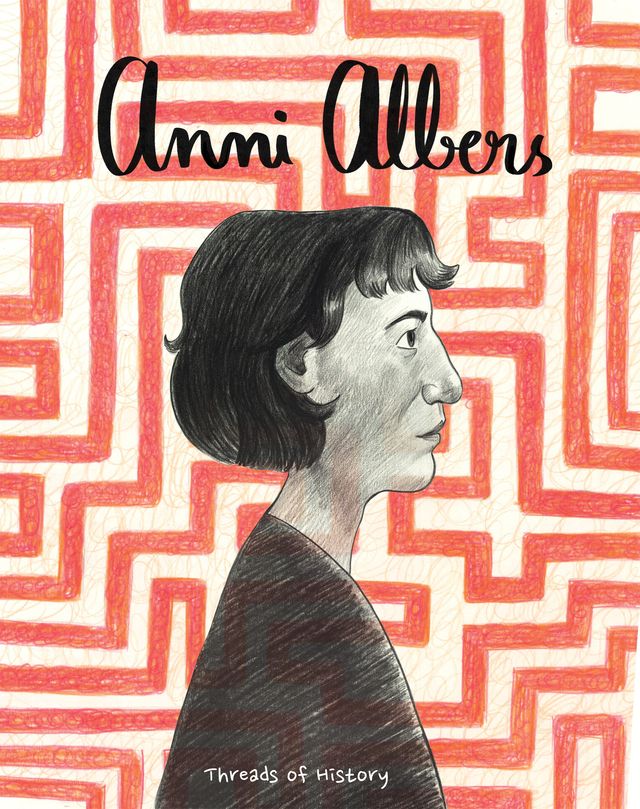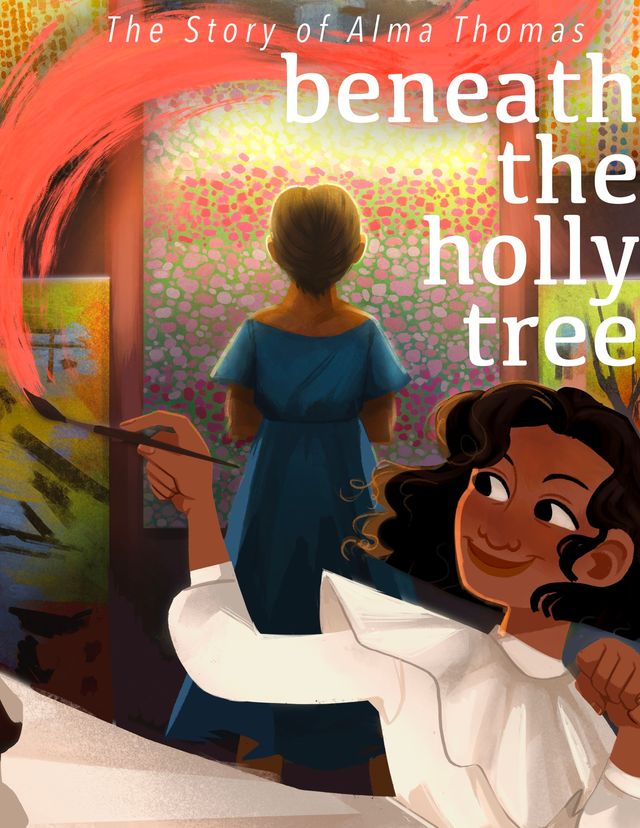An Overview
Kay WalkingStick is the daughter of a Scotch-Irish mother and a Cherokee father, who encouraged her to learn about her Indigenous roots. She finds inspiration in Native cultures, which encourages her to join patterns and landscapes in depicting her worldview.
This comic is part of a series Drawn to Art: Tales of Inspiring Women Artists that illuminates the stories of women artists in the collection of the Smithsonian American Art Museum. Inspired by graphic novels, these short takes on artists’ lives were each drawn by a student-illustrator from the Ringling College of Art and Design.
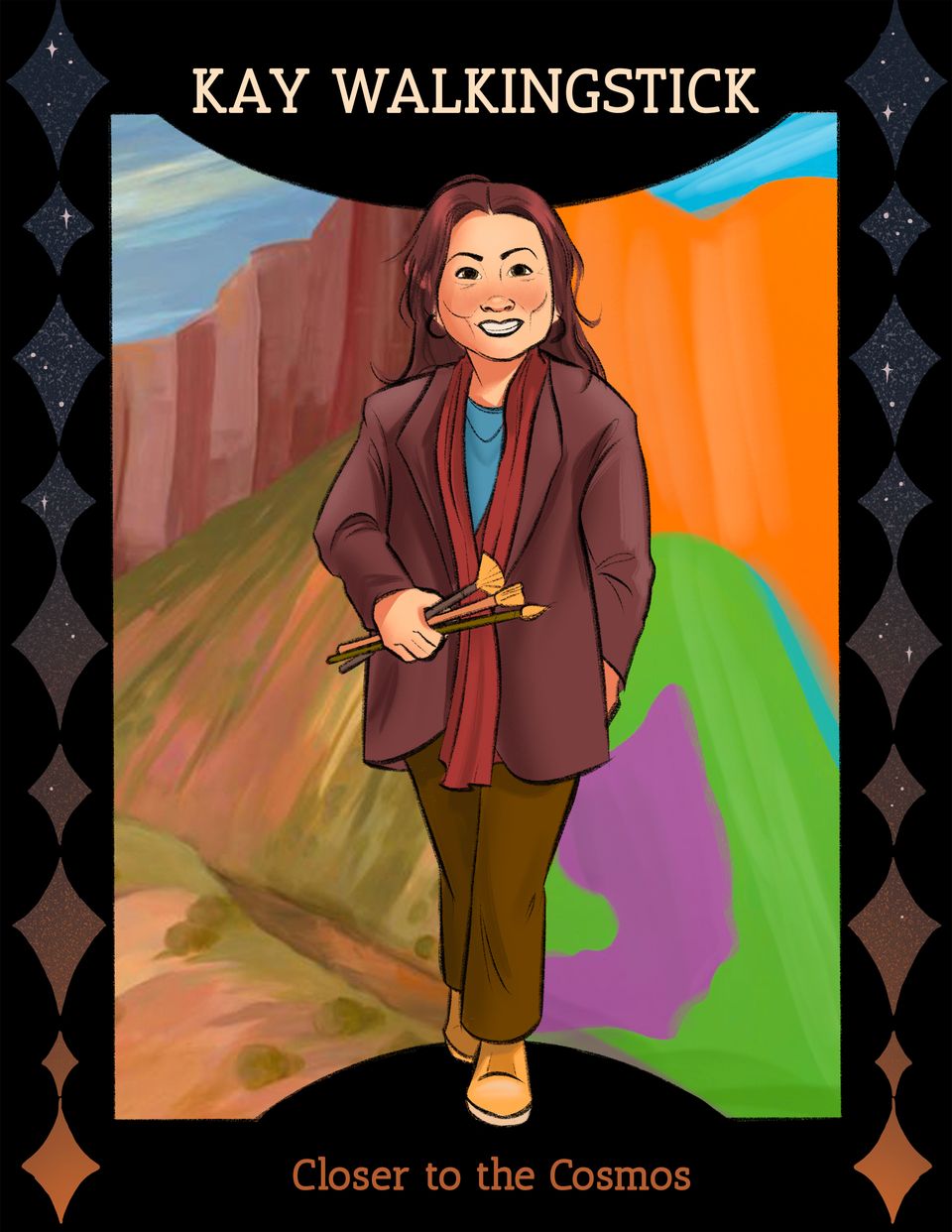
A woman stands facing us in the center of the page, wearing a brown suit on top of a blue shirt with a maroon scarf. She has light skin, brown shoulder-length hair, and is looking at us with a full-blown smile. In her left hand, she holds three paintbrushes and right hand is tucked in the pocket of her brown trousers. She stands with one leg in front of the other, as if she is walking toward us. The background displays two separate landscapes behind her. On her left side are rising mountains and canyons, and on her right side are colors in abstract forms including purple, green, orange and some blue on top, both of which remind us of Kay Walkingstick’s artworks. The image is framed in black background decorated by two strings of diamond-shaped cosmic design with colors changing gradually from black to orange on the left and right sides of the cover. The top of the page reads: “Kay Walkingstick,” while the bottom reads: “Closer To The Cosmos.”
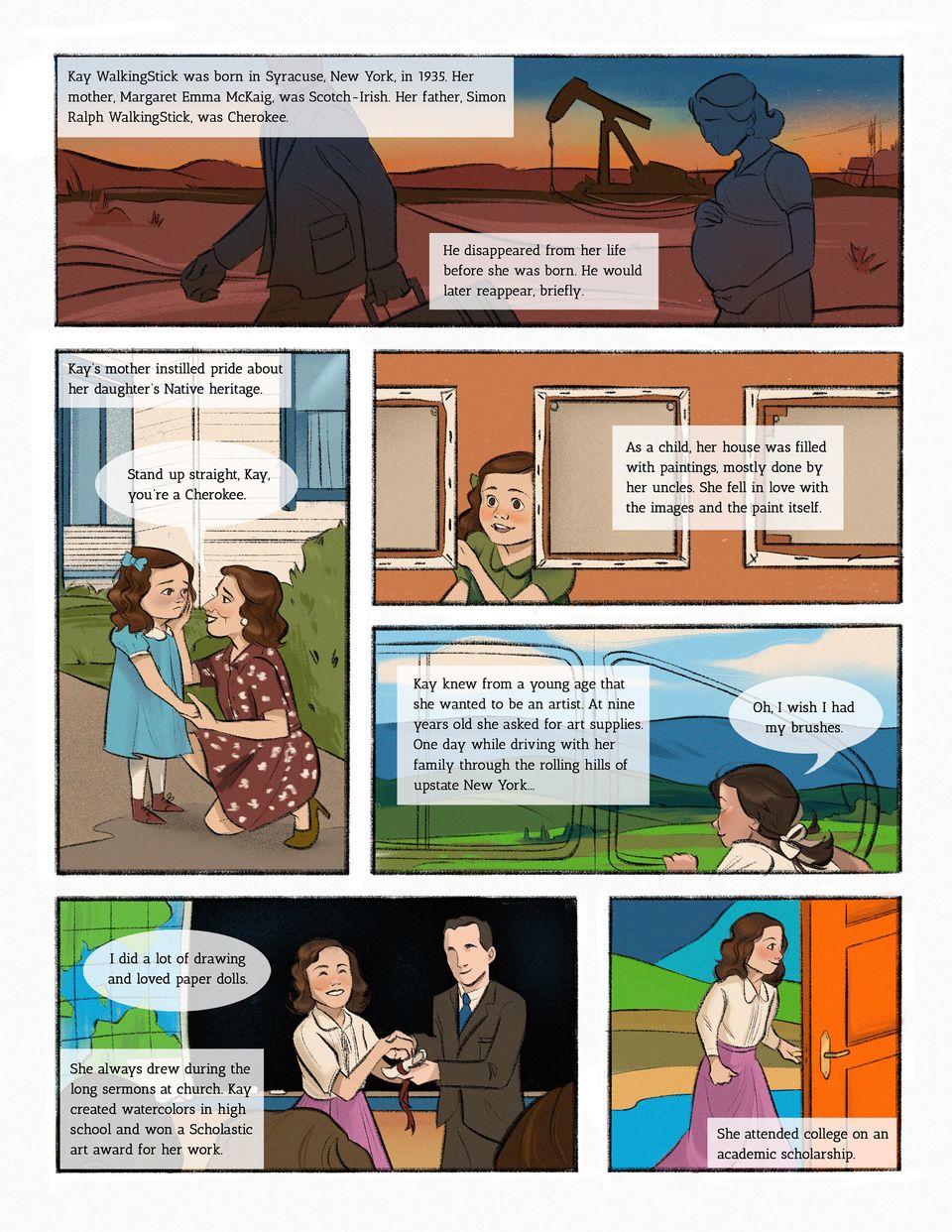
Panel 1:
The panel depicts shadows of a man and a pregnant woman. The man holding a suitcase is about to leave the pregnant woman on the right. She seems upset, and rests her hands on her belly. Behind them is an oil well on a barren land with a few hills. The sky is slightly colored in orange by the rising sun. Text reads: “Kay WalkingStick was born in Syracuse, New York, in 1935. Her mother Margaret Emma Mckaig, was Scotch-Irish. Her father, Simon Ralph WalkingStick was Cherokee.” Text between the characters reads: “He disappeared from her life before she was born, and would later reappear, briefly.”
Panel 2:
The young Kay Walkingstick, around 5 years old, stands in the center of the panel wearing a white collared blue dress and a blue hair bow on her dark hair. She looks sad, and her mother, wearing a brown dress with white dots, kneels down beside her trying to cheer her up. She holds the hand of Kay with one hand, and the other gently touching her face. The mother says: “Stand up straight, Kay, you’re a Cherokee.” They are in a garden with the lawn and bush in the background, behind it is a part of a house with white walls and blue colored windows. Text on the top left corner reads: “Kay’s mother instilled pride about her daughter’s Native heritage.”
Panel 3:
Three canvases spread throughout the panel with their backs facing us, text on top of them reads: “As a child, her house was filled with paintings, mostly done by her uncles. She fell in love with the images and the paint itself.” Behind the three canvases, the young Kay wearing an olive green dress and hair pin, looks at one of the canvases on the left in fascination.
Panel 4:
The young Kay is on the right bottom corner of the panel wearing a white hair bow. She peeks through a car window to see the unimpeded view of grassland and hills. The sky is clear with a few white clouds. Kay says: “Oh, I wish I had my brushes.” Text beside her reads: “Kay knew from a young age that she wanted to be an artist. At nine years old she asked for art supplies. One day while driving with her family through the rolling hills of upstate New York.”
Panel 5:
Kay is depicted as a young woman, wearing a cream-colored blouse with a light purple dress. She has a great smile on her face as she shakes hands with a man in grey suit and blue tie, who is handing her a certificate with red ribbon. Next to Kay, a bubble reads: “I did a lot of drawing and loved paper dolls.” Behind them is a world map and a blackboard. Some audiences are sitting in the front, but only showing the back of their heads. Text reads: “She always drew during the long sermons at church. She created watercolors in high school and won a Scholastic art award for her work.”
Panel 6: Kay is wearing a cream-colored blouse and purple dress. She faces us sideways with her hand opening an orange door. She has an affirmative smile on her face as she is about to walk out of the door. Behind her are layers of colors, arranged like the mountains, from light blue to yellow, greenish grey, light brown, bright green light blue, and dark blue on the top. Text reads: “She attended college on an academic scholarship.”

Top panel:
Kay is on the left side of the panel, casually wearing a light brown blouse and pants. She walks through a purple door while holding the hand of a man, who is depicted in blue shadow and his back facing us. Behind them are blue shadows of two children with their back toward us looking at the skyscrapers and green hills in the background. Text reads: “Kay married in 1959, had children, and continued to paint. She refused to be just one thing, a wife and a mother or a painter.”
Panel 2:
The panel goes behind the first panel, where Kay stands with her back toward us in the center. She is wearing a white blouse with her sleeves rolled-up. She holds a palette on one hand while using a brush to paint the background behind her. Her painting consists of orange, blue, green, and a little red and purple on the bottom, the colors in irregular shapes. Text reads: “Her early paintings were figurative works done in colorful acrylics.” A wooden table on the left side of Kay has several brushes in two avocado green cups and three tubes of paints on top. Text above it reads: “But it was not always easy for a woman artist to gain recognition in the art world of the 1970s and 80s.” Next to Kay a bubble says: “I had a gallery just say to me openly…”
Panel 3:
Kay stands in the middle of two men, wearing an oversized white blouse with her sleeves rolled-up and a pair of blue jeans. The two men are depicted as brown shadows standing in casual poses facing Kay. The man on the left says: “Oh, well, no, we have too many women artists already.” The man on the right says: “Oh, well, you’re just a dilettante woman from the suburbs.” Kay has her hands blocking her ears and her face turns slightly red, seems annoyed. The background shows abstract mix of colors of blue, purple and green.
Panel 4:
The panel depicts Kay in a black suit with her arms crossed, looking seriously at the reader. She says: “And I was furious.” She wears chunky jade green earrings and necklace, which forms a contrast with the dark red background. Text reads: “Nevertheless, she persisted and remained true to her vision.”
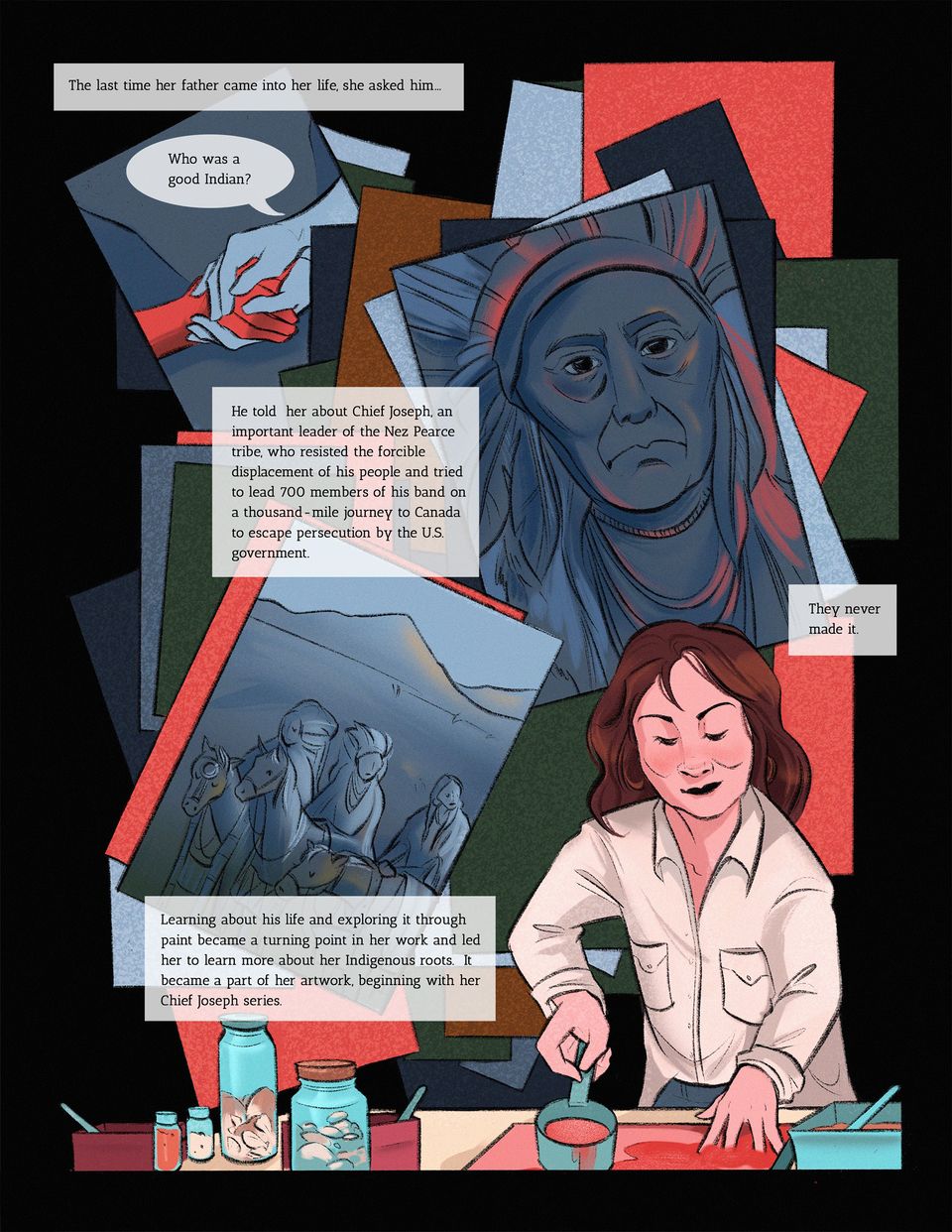
The layouts of the panels are like stacks of colorful papers arranged in no particular order. The papers in the backgrounds are colored in red, blue, dark blue, dark green and brown with the panels on top. Text reads: “The last time her father came into her life, she asked him…” The panel on the top left depicted a close up of hands holding together in a plain dark blue background. Text bubble reads: “Who was a good Indian?” The next panel is slightly below the first panel on the right, rotating a little to the left. It is a face close-up of an Indian chief wearing a feather headdress in dark blue tone with red highlights. He has a solemn look on his face. Besides its text reads: “He told her about Chief Joseph, an important leader of the Nez Pearce tribe, who resisted the forcible displacement of his people and tried to lead 700 members of his band on a thousand-mile journey to Canada to escape persecution by the US government.” “They never made it.” The third panel is on the left bottom of the second panel, rotating a little to the right. It depicted an indigenous tribe, around three people wearing feather headdresses, on their horses with mountains behind them. They are in the same dark blue tone. Text below reads: “Learning about his life and exploring it through paint became a turning point in her work and led her to learn more about her Indigenous roots. It became a part of her artwork, beginning with her Chief Joseph series.”
All of the panels are in the background while Kay, wearing a long-sleeved white blouse, stands on the right bottom corner of the page. She is painting with her left hand while holding a cup filled with red paint in her right hand while looking down at her painting with a smile. Jars and boxes are on the table, they are filled with red pigment and other materials used to make natural paints.
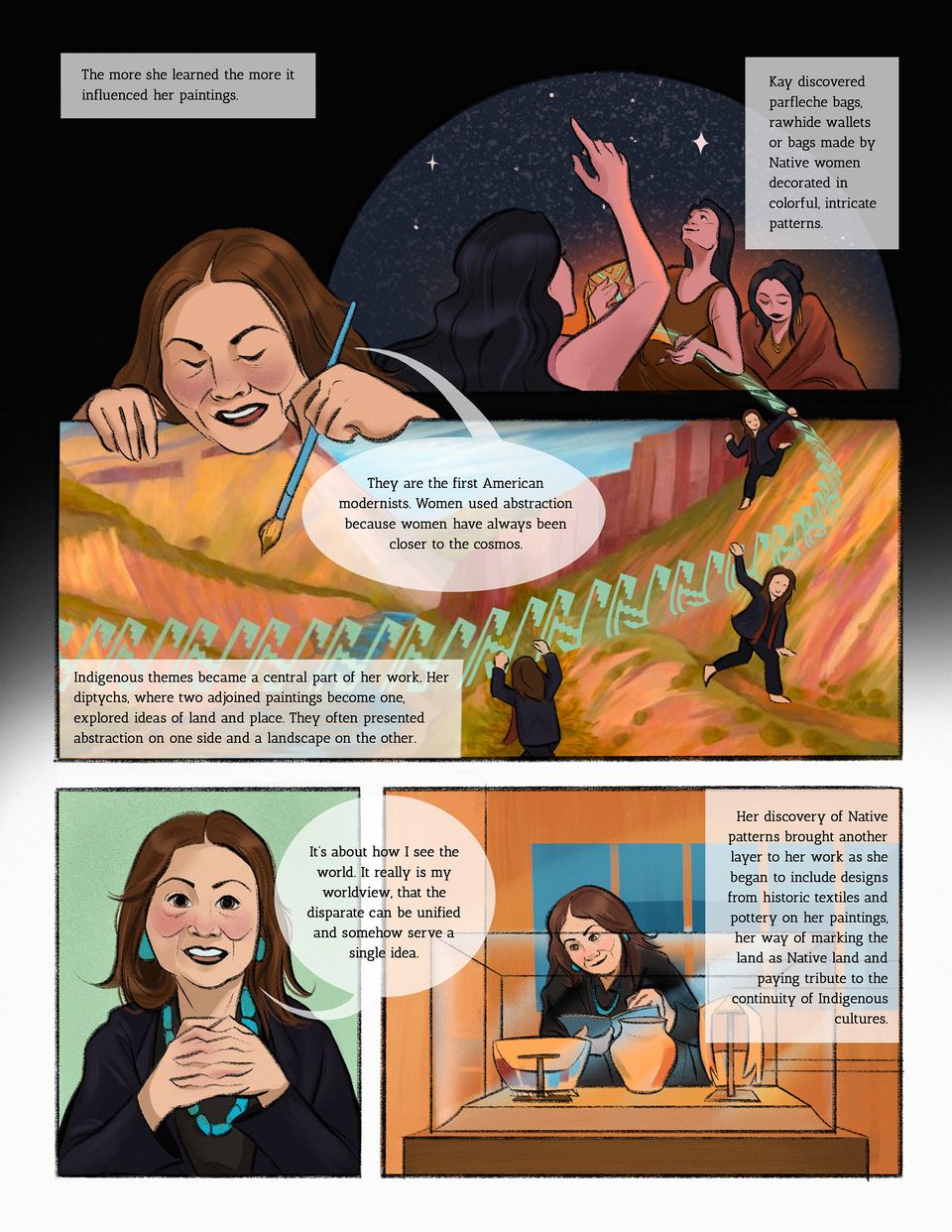
Panel 1:
On the top panel, three women with long black hair in brown dress sit under a night sky full of stars. The woman in front has her back towards us and her right arm up towards the sky pointing at the stars with her finger. The other two women behind her facing us, one looking up at the stars with a paintbrush and a totem-like book, the other looking down. The sky is depicted in semi-circle shape, like a glass globe within a black background. Text reads: “The more she learned the more it influenced her paintings.” Another text besides the three women reads: “Kay discovered parfleche bags, rawhide wallets or bags made by Native women decorated in colorful, intricate patterns.”
Panel 2:
Patterns flow out from the totem in panel one like a melody flowing out of the music score that continues in panel two. Three figures of Kay wearing black suits in bare feet are running and dancing along with the patterns. An enlarged figure of Kay leans over on the left side of the panel with a brush in her hand, painting the mountains and canyons in the background. She says: “They are the first American modernists. Women used abstraction because women were always closer to the Cosmos.” Text on the bottom of the panel reads: “Indigenous themes became a central part of her work. Her diptychs, where two adjoined paintings became one, explored ideas of land and place. They often presented abstraction on one side, and a landscape on the other.”
Panel 3:
The bottom left panel is a close-up of Kay clasping her hands and looking right at us with a smile. She is wearing a black blouse with chunky turquoise earrings and necklace. She said: “It’s about how I see the world. It really is my worldview, that the disparate can be unified and somehow serve a single idea.”
Panel 4:
In the bottom right panel, Kay is wearing a black blouse with turquoise earrings and necklace. She is looking at Indigenous exhibits from the display case in front of her while taking notes on her blue notebook. Behind her are other exhibits in blue colors hanging on the brown wall. Text reads: “Her discovery of Native patterns brought another layer to her work as she began to include designs from historic textiles and pottery on her paintings, her way of marking the land as Native land and paying tribute to the continuity of Indigenous cultures.”
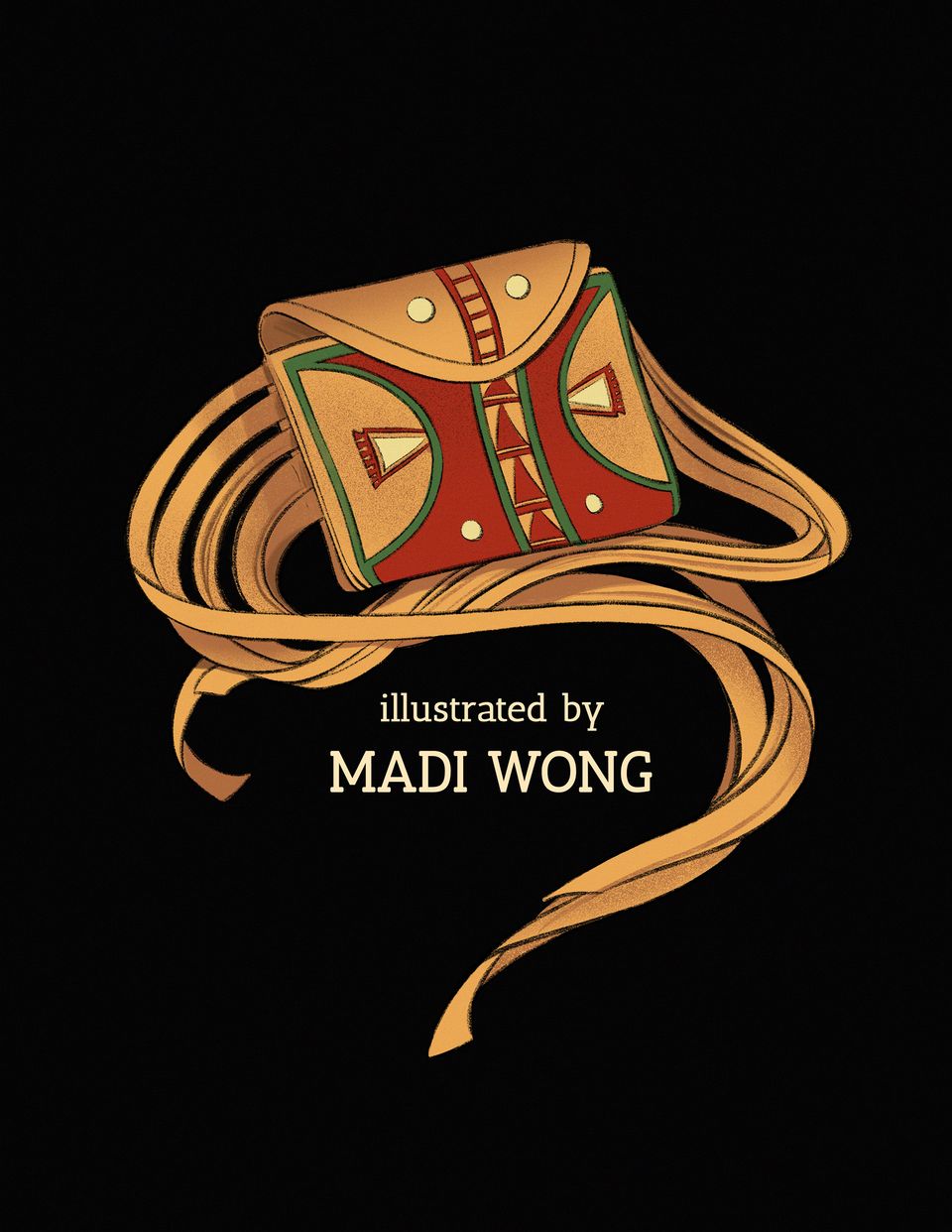
A light brown rawhide bag decorated with intricate indigenous style patterns. Dark red used as the main color and the patterns are made with two semi-circles outlined in dark green on the sides, inside them are white triangles outlined in dark red. In the center, a string of dark red triangles forms a vertical line with green lines along sides of them. The flap is in light brown decorated with ladder like dark red lines in the center. Long fringes on the two sides of the bag crosses in an ‘S’ shape in the black background. Text below reads: “illustrated by Madi Wong.”














